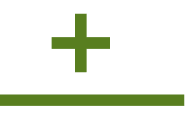If there is any one technical document that can be considered the “master” document for a capital project, it is the Piping and Instrumentation Diagram (P&ID). Ubiquitous in industrial environments, project P&IDs perform a multitude of functions, all of which are necessitated by having current and detailed process information about the facility: process definition (new or existing), OSHA required Process Hazard Analysis (PHA), tracking maintenance activities, operational planning and work processes, and much more.
In this article, we’ll explain project P&IDs and discuss how they relate to capital projects.
Project P&IDs Explained
A P&ID is a schematic drawing that depicts the configuration of equipment, piping, valving, and instruments used to control the process in a process facility. The P&ID is the blueprint for the project; it should include all major equipment, piping, and instrumentation.
Project P&IDs are the foundation for maintenance, modifications, and expansions of the process that it visually represents. For this reason, project P&IDs are kept “evergreen” and up to date, representing all existing equipment, piping, and instrumentation. For processing facilities, it provides a visual representation of:
- Important piping and instrumentation details.
- Control and shutdown schemes.
- Basic start-up and operational information.
- Safety and regulatory requirements.
.jpeg)
Project P&IDs Explained: Key Elements
Project P&IDs are the main scope documents for capital projects. The P&IDs clearly represent the work to be performed in the execution stage. A project P&ID represents the “future state” of the facility at project completion.
Project P&IDs are started at the very beginning of a project, typically in front-end loading (FEL) 2. By the time you reach the execution stage (the end of FEL 3/the beginning of detail engineering and design), the project P&ID should be complete. Things like major equipment and piping should be fully defined at this stage and shown in the P&ID.
In general, project P&IDs going into the execution phase should contain the following information:
- Major process equipment (1) - *Equipment List
- Equipment data shown in Equipment Block (2)
- Process Flow Identification (material and flow direction) (3)
- Process Piping with Specifications (4) - *Line List
- Instrumentation ID (5) - *Instrument List
- Valve and Tagged Items Identification/Specifications (6)
- Basic Automation/Controls information (e.g. interlocks, controls interface, etc.) (7)
(#) - Drawing Example Reference
(*represents a key component of named project document)
Project P&IDs Explained: P&IDs for Existing Facilities
If a project P&ID is newly created for the project, everything on the page will be included in the project. However, if the project involves an existing P&ID, the new project components are added to the P&ID and “clouded” with a revision triangle on the cloud tied to a revision block description of the project.
.png)
Where the new project components interface with existing facility items (in particular, piping), a “tie-in” is shown on the drawing to reflect where the new piping joins the existing.
.png)
The revision block at the bottom of the drawing border will give a history of changes made to the P&ID and serves a very important document control purpose—this will be discussed more in depth at a later point.
H+M Industrial EPC: Delivering Capital Project Success Since 1988
For more than 30 years, H+M Industrial EPC has provided leading capital project management services to the energy, chemicals, and terminal and logistics industries using our proven EPC approach, established work processes, and highly experienced team.

The H+M Industrial Team
For over three decades, we have provided best-in-class capital project management services to Energy and Chemical industries through our proven EPC approach. We are dedicated to providing trust, experience, and efficiency through all stages of engineering, procurement, and construction--on budget and on time.

Partnering with H+M Modular
H+M Modular, a division of H+M Industrial EPC, specializes in custom fabricated equipment, modules, and skids for energy and chemical industries. The approach emphasizes the potential for decreased risk through more controlled fabrication, leading to enhanced quality and safety, reduced labor costs and construction times, improved labor availability, and solutions to geographic challenges. We are dedicated to providing trust, experience, and efficiency through all stages of traditional and modular construction projects using our proven EPFC approach, If you're considering modular fabrication, we invite you to connect with us to learn about how modular solutions can improve project outcomes.





